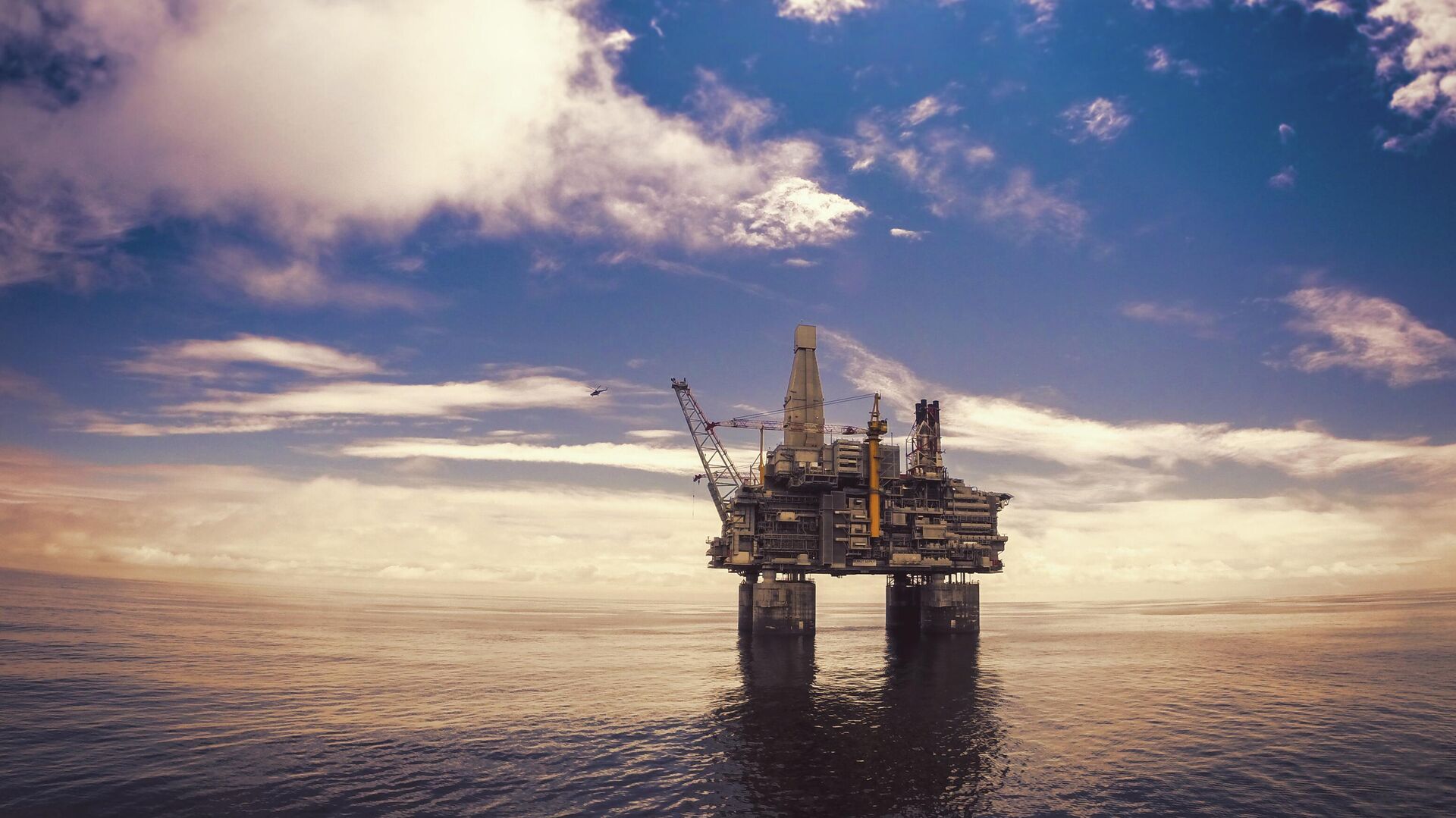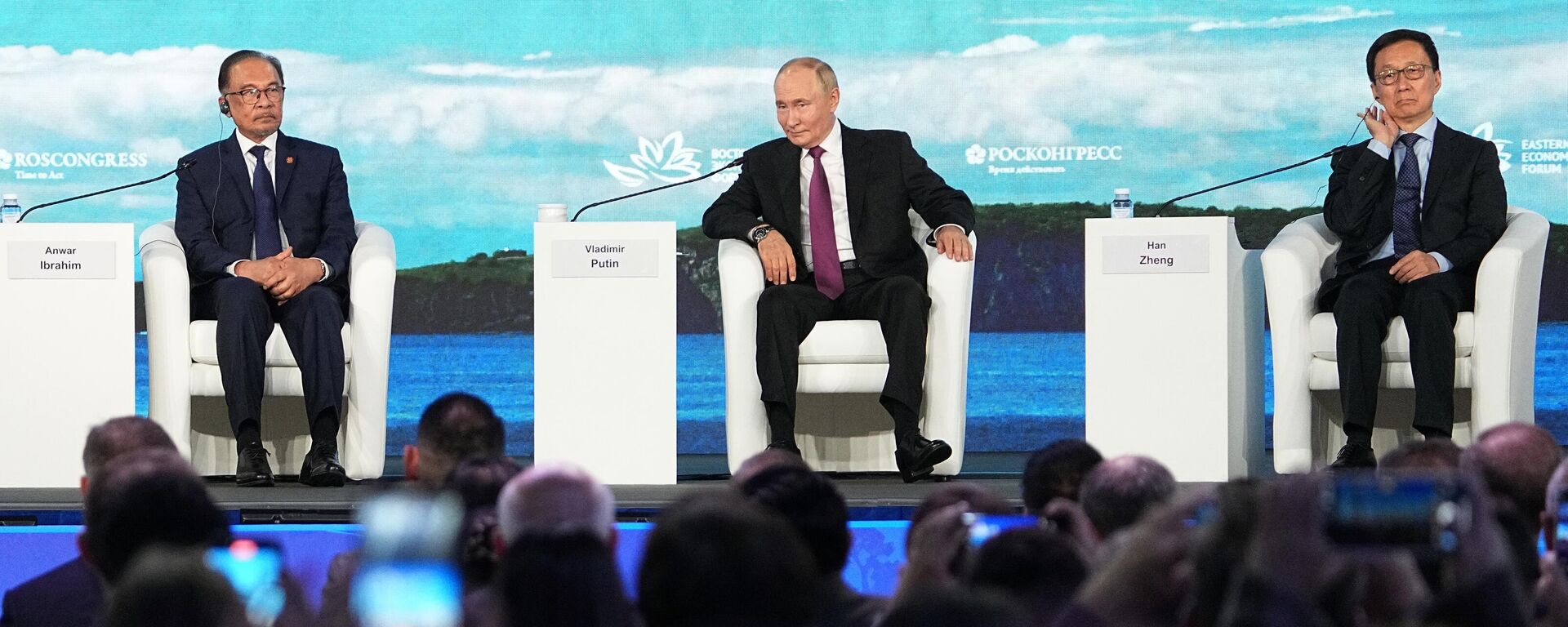https://sputniknews.in/20241021/india-eyes-russias-far-east-for-strategic-advantages-industry-sources-8299621.html
India Eyes Russia's Far East for Strategic Advantages: Industry Sources
India Eyes Russia's Far East for Strategic Advantages: Industry Sources
Sputnik India
Investing in Russia's Far East for gas, LNG, and uranium aligns with India's objective of achieving net-zero emissions by 2070. This investment not only... 21.10.2024, Sputnik India
2024-10-21T20:33+0530
2024-10-21T20:33+0530
2024-10-22T13:23+0530
indo-russian relations
government of india
ministry of external affairs (mea)
russia
mod russia
india-russia summit
russian economy
joint indo-russian venture
russian diamonds
critical minerals
https://cdn1.img.sputniknews.in/img/07e7/03/0f/1175693_0:151:3103:1896_1920x0_80_0_0_3445df09d0348d09ca8104e89eadb441.jpg
India is diversifying its energy sources, buying 40% of its oil from Russia to reduce dependence on Western-controlled markets and bolster energy security, industry sources told Sputnik India while discussing India’s plan on Russia’s Far East.This move strengthens India's partnership with Russia and provides a competitive economic advantage, according to sources.India's current LNG regasification capacity is around 42.5 million metric tons per annum (MTA), with plans to pump it up to 70 MTA by 2030 and 100 MTA by 2040.With nearly 20% of the world's population and a high rate of smartphone penetration, companies such as Facebook are investing in Reliance Industries to help avert mobile tariff hikes.As artificial intelligence (AI) continues to evolve, its power requirements will grow significantly, industry sources indicate. This is underscored by NVIDIA's recent rise as a market leader, as their chips have the potential to power approximately 400,000 homes across the United States.This emphasises the increasing energy demands driving India to invest in nuclear energy and underscores the importance of its partnership with Russia. Both nations are cooperating to counter Western dominance, they asserted.The future of global energy consumption is increasingly shifting towards electricity, particularly driven by the rise of AI-powered data centers. This trend could spark greater interest in nuclear energy as a viable green alternative, according to industry sources. As of May 2024, India boasts over 378 million Facebook users, ranking it as the third largest user base globally. Additionally, with 467 million YouTube users recorded in early 2023, India represents a significant market for Google. Social commerce is experiencing rapid growth, projected to achieve a compound annual growth rate of 55-60% from 2020 to 2025. Over the next decade, India is expected to emerge as the largest market for social media advertising outside of China.Russia is actively advancing its plans to enhance its nuclear energy sector, focusing on developing new reactor technologies and committing to closing the fuel cycle, with fast reactors being central to this strategy.Additionally, exporting nuclear goods is a key policy goal, with over 20 reactors confirmed or planned for export and foreign orders totaling $133 billion as of late 2017. Russia is enhancing its leadership in fast neutron reactor technology through the Proryv ('Breakthrough') project.Similarly, the global energy landscape is evolving, with China and India prioritising renewable energy, particularly solar power. In contrast, Russia continues to leverage its strength in natural resources, especially oil, gas, and nuclear materials like uranium, the sources said.India is also working towards its decarbonisation goals, planning to increase the share of gas in its energy mix and potentially invest in nuclear energy as data centres and electric vehicles drive higher energy demand, they indicated.The intensifying conflict between Israel and Iran presents a significant geopolitical threat to energy markets, sparking concerns about the safety of vital energy infrastructure and transit routes, particularly the Strait of Hormuz. Disruptions in this region could lead to an increase in oil prices and jeopardise global energy security, given the considerable influence both nations wield in the Middle East.Russia is one of the top five countries in the world in terms of uranium resources, boasting an estimated 486,000 tons, which represents about 8% of the global supply. As power demand continues to rise significantly, experts underscore the importance of alternative fuel sources for India. They highlight that Russia provides affordable, high-quality energy supplies, which could strengthen India's competitiveness in electric vehicle manufacturing, support initiatives such as "Make in India," and bolster both energy independence and economic stability.
https://sputniknews.in/20240906/non-western-world-tired-of-forced-decoupling-of-global-economy-goes-to-vladivostok-8121065.html
russia
russia's far east
india
Sputnik India
feedback.hindi@sputniknews.com
+74956456601
MIA „Rossiya Segodnya“
2024
Swapna Nair
https://cdn1.img.sputniknews.in/img/07e7/09/12/4320104_0:0:681:681_100x100_80_0_0_ca8a7d4d582609272840ffdd1cde7278.jpg
Swapna Nair
https://cdn1.img.sputniknews.in/img/07e7/09/12/4320104_0:0:681:681_100x100_80_0_0_ca8a7d4d582609272840ffdd1cde7278.jpg
News
en_IN
Sputnik India
feedback.hindi@sputniknews.com
+74956456601
MIA „Rossiya Segodnya“
Sputnik India
feedback.hindi@sputniknews.com
+74956456601
MIA „Rossiya Segodnya“
Swapna Nair
https://cdn1.img.sputniknews.in/img/07e7/09/12/4320104_0:0:681:681_100x100_80_0_0_ca8a7d4d582609272840ffdd1cde7278.jpg
government of india, ministry of external affairs (mea), russia, mod russia, india-russia summit, russian economy, joint indo-russian venture, russian diamonds, critical minerals, russia's far east, india, narendra modi
government of india, ministry of external affairs (mea), russia, mod russia, india-russia summit, russian economy, joint indo-russian venture, russian diamonds, critical minerals, russia's far east, india, narendra modi
India Eyes Russia's Far East for Strategic Advantages: Industry Sources
20:33 21.10.2024 (Updated: 13:23 22.10.2024) Investing in Russia's Far East for gas, LNG, and uranium aligns with India's objective of achieving net-zero emissions by 2070. This investment not only contributes to a diverse energy portfolio but also facilitates the establishment of definitive targets for reducing carbon emissions, as noted by various sources.
India is diversifying its energy sources, buying 40% of its oil from Russia to reduce dependence on Western-controlled markets and bolster energy security, industry sources told Sputnik India while discussing India’s plan on Russia’s Far East.
This move strengthens India's partnership with Russia and provides a competitive economic advantage, according to sources.
India's current LNG regasification capacity is around 42.5 million metric tons per annum (MTA), with plans to pump it up to 70 MTA by 2030 and 100 MTA by 2040.
With nearly 20% of the world's population and a high rate of smartphone penetration, companies such as Facebook are investing in Reliance Industries to help avert mobile tariff hikes.
“If Reliance were to increase these tariffs, data consumption could decline, affecting the market's value for companies like Facebook and Google, which rely on Indian users for their growth,” they noted.
As artificial intelligence (AI) continues to evolve, its power requirements will grow significantly, industry sources indicate. This is underscored by NVIDIA's recent rise as a market leader, as their chips have the potential to power approximately 400,000 homes across the United States.
This emphasises the increasing energy demands driving India to invest in nuclear energy and underscores the importance of its partnership with Russia. Both nations are cooperating to
counter Western dominance, they asserted.
The future of global energy consumption is increasingly shifting towards electricity, particularly driven by the rise of AI-powered data centers. This trend could spark greater interest in nuclear energy as a viable green alternative, according to industry sources.
As of May 2024, India boasts over 378 million Facebook users, ranking it as the third largest user base globally. Additionally, with 467 million YouTube users recorded in early 2023, India represents a significant market for Google. Social commerce is experiencing rapid growth, projected to achieve a compound annual growth rate of 55-60% from 2020 to 2025. Over the next decade, India is expected to emerge as the largest market for social media advertising outside of China.
Hence, India is poised to boost its reliance on nuclear energy and gas to meet its growing energy demand, despite challenges in forming nuclear partnerships, reflecting broader shifts in global energy dynamics as countries strive for energy security, industry pundits mentioned.
Russia is actively advancing its plans to enhance its nuclear energy sector, focusing on developing
new reactor technologies and committing to closing the fuel cycle, with fast reactors being central to this strategy.
Additionally, exporting nuclear goods is a key policy goal, with over 20 reactors confirmed or planned for export and foreign orders totaling $133 billion as of late 2017. Russia is enhancing its leadership in fast neutron reactor technology through the Proryv ('Breakthrough') project.
Similarly, the global energy landscape is evolving, with China and India prioritising renewable energy, particularly solar power. In contrast, Russia continues to leverage its strength in natural resources, especially oil, gas, and nuclear materials like uranium, the sources said.
India is also working towards its decarbonisation goals, planning to increase the share of gas in its energy mix and potentially invest in nuclear energy as data centres and electric vehicles drive higher energy demand, they indicated.
Investing in Russia's Far East for gas, LNG, and uranium aligns with India's commitment in achieving net zero emissions by 2070, as it sets specific milestones for reducing carbon emissions, sources said.
The intensifying conflict between Israel and Iran presents a significant geopolitical threat to energy markets, sparking concerns about the safety of vital energy infrastructure and transit routes, particularly the Strait of Hormuz.
Disruptions in this region could lead to an increase in oil prices and jeopardise global energy security, given the considerable influence both nations wield in the Middle East.
Despite the West has imposing restrictions on dealing with Russia, especially for private companies, India’s government is exploring ways to invest in Russia’s Far East and other areas to ensure long-term energy security and economic benefits, sources stressed.
Russia is one of the top five countries in the world in terms of uranium resources, boasting an estimated 486,000 tons, which represents about 8% of the global supply.
As power demand continues to rise significantly, experts underscore the importance of alternative fuel sources for India. They highlight that Russia provides affordable, high-quality energy supplies, which could strengthen India's competitiveness in
electric vehicle manufacturing, support initiatives such as "Make in India," and bolster both energy independence and economic stability.



